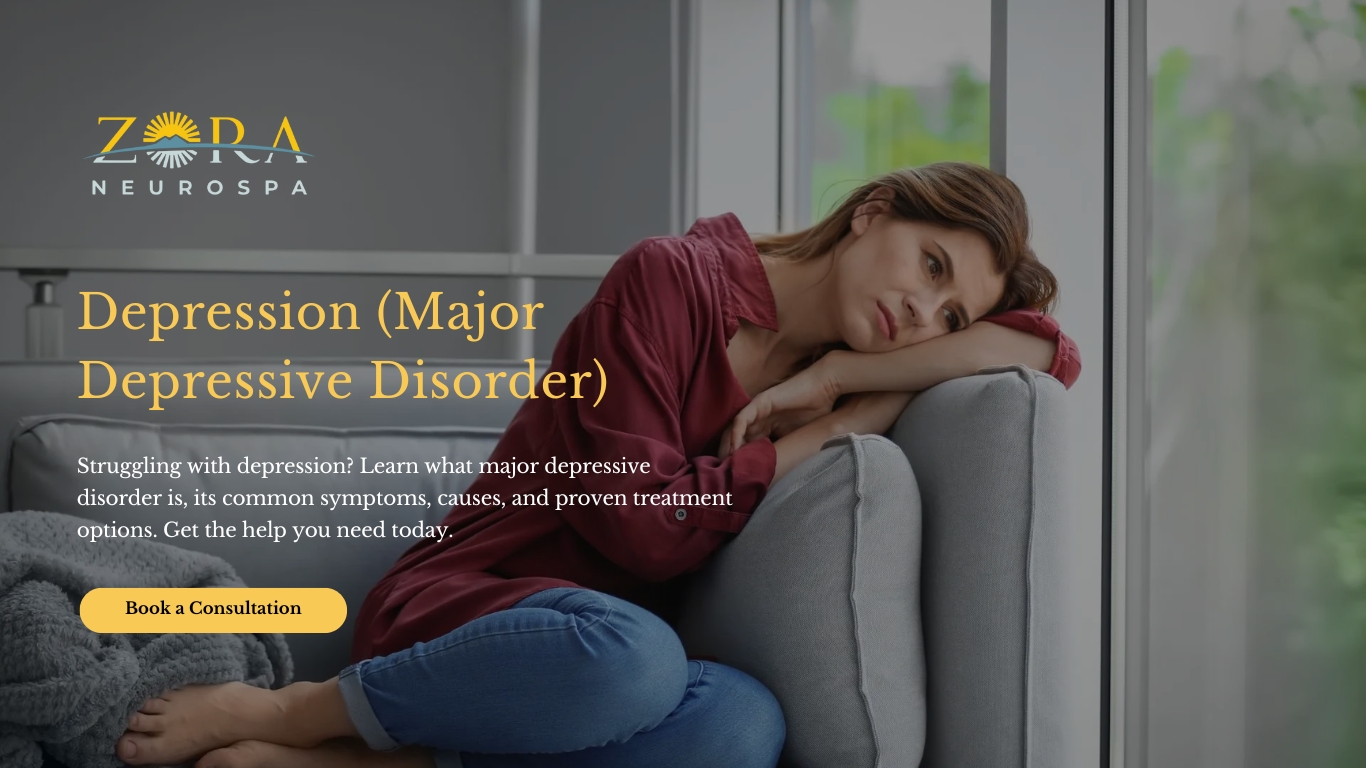
Depression (Major Depressive Disorder): Understanding, Symptoms, and Treatment
Depression, medically known as Major Depressive Disorder (MDD), is more than just feeling sad or going through a rough patch. It’s a serious mental health condition that affects how a person feels, thinks, and manages daily activities. With millions affected worldwide, understanding depression is a critical step toward healing and helping others.
What Is Major Depressive Disorder?
Major Depressive Disorder is a mood disorder characterized by persistent sadness, loss of interest or pleasure in most activities, and a range of emotional and physical problems. It can impair a person’s ability to function at work, school, or home. Depression can occur at any age, but it often begins in adulthood. It’s also increasingly recognized in children and adolescents.
Common Symptoms of Depression
To be diagnosed with MDD, symptoms must be present for at least two weeks and represent a change from previous functioning. Common symptoms include:
- Persistent sad, anxious, or “empty” mood
- Loss of interest or pleasure in hobbies and activities
- Fatigue or decreased energy
- Feelings of worthlessness, guilt, or hopelessness
- Difficulty concentrating, remembering, or making decisions
- Insomnia or sleeping too much
- Appetite or weight changes
- Thoughts of death or suicide
- Physical symptoms (e.g., aches, pains, digestive problems) without a clear physical cause
Not everyone with depression will experience all symptoms. The severity, frequency, and duration can vary.
Causes and Risk Factors
Depression is complex and may be caused by a combination of genetic, biological, environmental, and psychological factors. Common contributors include:
- Genetics: A family history of depression increases the risk.
- Brain Chemistry: Imbalances in neurotransmitters like serotonin and dopamine.
- Life Events: Trauma, loss of a loved one, financial problems, or major life changes.
- Medical Conditions: Chronic illnesses, hormonal disorders, and certain medications.
- Personality Traits: Low self-esteem, pessimism, or high levels of stress.
Diagnosis and Screening
A healthcare provider typically diagnoses depression through a physical exam, interviews, and questionnaires. There are no lab tests to diagnose depression, but medical evaluations help rule out other conditions.
Treatment Options
The good news is that depression is treatable, even in severe cases. Treatment options include:
1. Psychotherapy
Also known as talk therapy, psychotherapy helps individuals understand the root causes of their depression, develop coping strategies, and manage stress. Cognitive-behavioral therapy (CBT) and interpersonal therapy (IPT) are commonly used.
2. Medication
Antidepressants like SSRIs, SNRIs, and other classes of medication can help correct chemical imbalances in the brain. It may take a few weeks to see results, and finding the right medication may require adjustments.
3. Lifestyle Changes
- Regular physical activity
- Healthy diet
- Adequate sleep
- Reducing alcohol and avoiding drugs
- Building supportive social connections
4. Alternative Treatments
Some individuals explore options like mindfulness, meditation, acupuncture, or supplements. These should be discussed with a healthcare provider to ensure safety and effectiveness.
5. Severe Cases
In cases where depression does not respond to other treatments, options such as electroconvulsive therapy (ECT) or transcranial magnetic stimulation (TMS) may be recommended.
Suicide Prevention
Depression can lead to suicidal thoughts. If you or someone you know is in crisis:
- Call emergency services
- Contact a mental health professional immediately
- Reach out to suicide prevention hotlines (e.g., 988 in the U.S.)
Final Thoughts
Depression is not a sign of weakness, and it’s not something people can “just snap out of.” It is a legitimate medical condition that requires understanding, compassion, and evidence-based treatment. Recovery is possible, and many people go on to live fulfilling, joyful lives after treatment.
